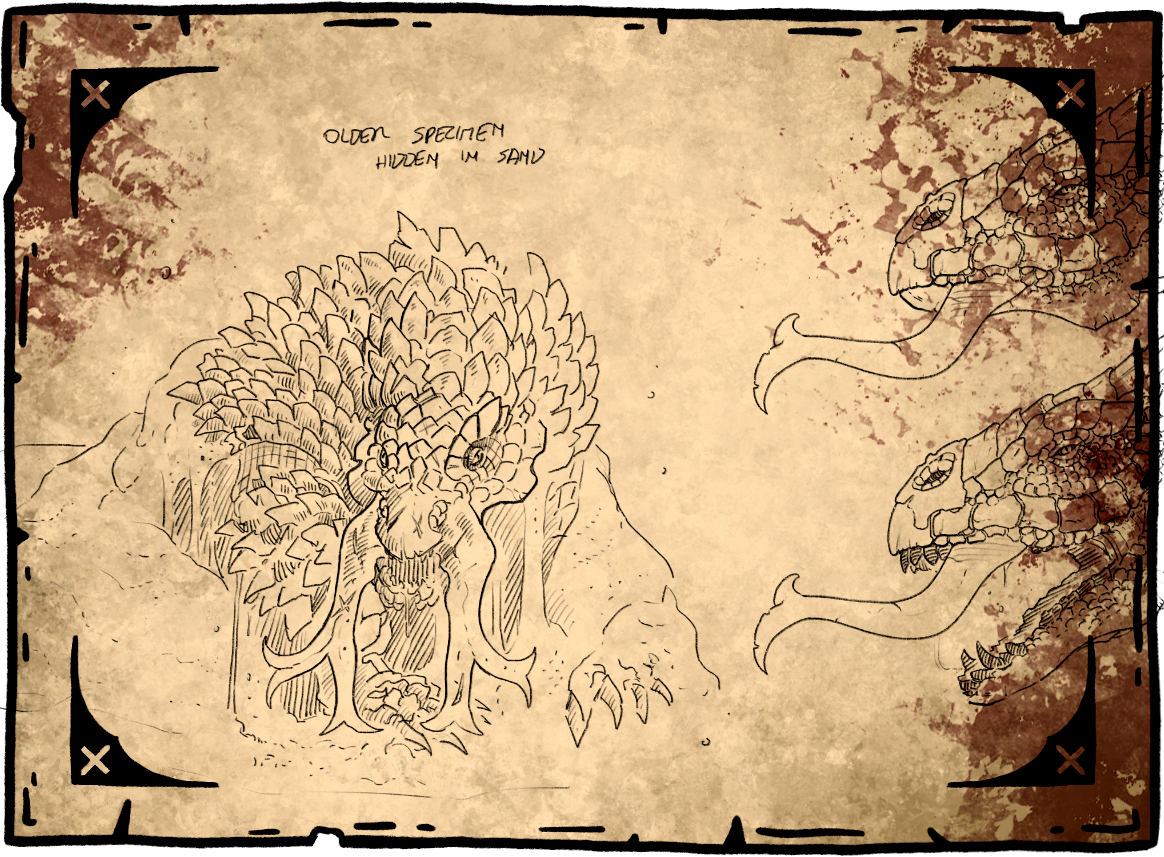Shasume
The Shasume defends itself by burrowing the rear half of it's body in the sand, leaving its heavily armored front half and tusks free to fend off attackers. Herds of Shasume will create a circle, overlapping their armored shoulders effectively creating a wall of armor to protect the younger and weaker Shasume in the middle.
Shasume have short but powerful tails that they use as shovels to quickly dig through sand and bury themselves.
The Shasume moves fairly slow, to conserve it's water, but can sprint extremely fast for a short period of time, charging a predator, or threat, when surprised.
Basic Information
Anatomy
Six legs support a long, wide body. The Shasume's face and front shoulders are heavily armored with plate like scales.
Tusks protrude from its upper jaw, and bifrocate at least 2 times (Up to 4 times as the creature ages), creating a natural sieve that the Shasume uses to sift through the sand and dig up roots, insects, or smaller animals. The Shasume's long tongue is able to quickly dart out and snag anything dug up by the tusks.
Genetics and Reproduction
Shasume females will lay a batch of 2-4 eggs, which they carry with their middle legs, beneath their bodies. The eggs will be carried for 5 weeks before they hatch. Once hatched, the baby Shasume will ride on their mother for a few months, eating food from her tusks until their own tusks begin to grow.
Dietary Needs and Habits
While the Shasume will mainly eat plants, it is classified as an omnivore and will tend to eat whatever it can find. Crushing food with its large, flat back teeth, or tearing flesh apart with its front incisors. The Shasume can survive for weeks without needing to find a source of water, since it's body gains most of the moisture it needs from the food it consumes.
Additional Information
Domestication
The Shasume has been domesticated to a degree, by people who live in the desert, due to the ease of care, slow movement speeds, and protein rich meat. Due to the Shasume's slow movement speed, they tend to stay near sources of water or food. Allowing Shasume herders to maintain the herd simply by providing the most accessible source of water and food.
Uses, Products & Exploitation
Used for food and their armored scales. Tusks have been used for generations as ritual items.
Geographic Origin and Distribution
Found in most deserts.
Average Intelligence
The Shasume is a beast and so far, has not displayed any form of intelligence outside of other animals.
Lifespan
30-40 years
Average Height
Roughly 5' Tall
Average Weight
1,100 lbs
Fully grown adults range from 1300 to 2500 lbs. The females are usually larger
Average Length
15 feet long, from snout to tip of the tail
Body Tint, Colouring and Marking
Coloring ranges from light grey to tan. During their mating season, Shasume females will grow brightly colored scales ranging from bright blue to yellow.




Comments